Hibiscus cravenii is a species of flowering plant in the mallow family, Malvaceae, that is endemic to the Northern Territory in Australia.

Haemodorum brevicaule is a perennial herb from 0.025 to 0.3 m tall, in the bloodroot family, the Haemodoraceae, native to northern Australia. It has deep-red to purplish-black flowers which are seen from September to December, and it grows on red clay and basalt.

Dampiera altissima, commonly known as tall dampiera, is an erect perennial herb of the family Goodeniaceae native to Western Australia. Dampiera altissima is the tallest plant within its genus, Dampiera.

Nymphoides crenata, commonly known as wavy marshwort, is an aquatic perennial herb of the family Menyanthaceae endemic to Australia, found in all mainland states and the Northern Territory
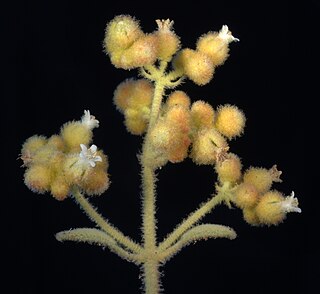
Dicrastylis exsuccosa is a species of plant within the genus, Dicrastylis, in the family Lamiaceae. It is endemic to inland Australia and found in Western Australia, the Northern Territory and South Australia.
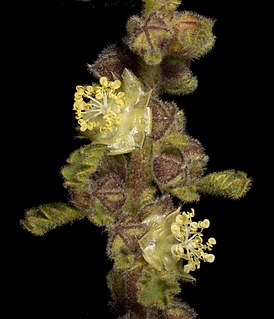
Lawrencia densiflora is a species of plant in the mallow family, Malvaceae. It is endemic to Western Australia

Scaevola acacioides, is an erect, spreading shrub in the family Goodeniaceae.

Scaevola basedowii is an erect multi-stemmed shrub in the family Goodeniaceae, endemic to Western Australia, the Northern Territory and South Australia.

Scaevola browniana is a shrub in the family Goodeniaceae, endemic to Western Australia, the Northern Territory and Queensland.

Scaevola glandulifera, the viscid hand-flower, is a shrub in the family Goodeniaceae, endemic to Western Australia.

Pityrodia ternifolia is a flowering plant in the mint family, Lamiaceae, which is native to the Northern Territory, and Western Australia.

Alysicarpus schomburgkii is a species of pea found in Australia, in the Northern Territory, Queensland, and Western Australia. It was first described in 1926 by Anton Schindler from four specimens: two collected at Port Darwin and the others from north Queensland.

Dicrastylis rugosifolia is a species of plant within the genus, Dicrastylis, in the family Lamiaceae. It is endemic to the south-west of Western Australia.
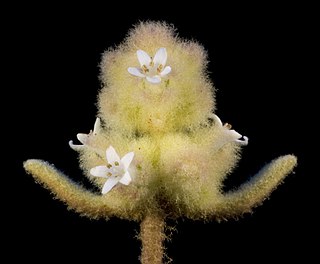
Dicrastylis brunnea is a species of plant within the genus, Dicrastylis, in the family Lamiaceae. It is endemic to the south-west of Western Australia.

Dicrastylis beveridgei is a species of plant within the genus, Dicrastylis, in the family Lamiaceae. It is found in Western Australia, the Northern Territory, and South Australia.
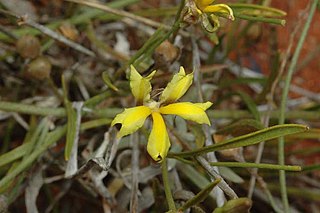
Goodenia fascicularis, commonly known as silky goodenia, is a species of flowering plant in the family Goodeniaceae and is widely distributed in eastern continental Australia. It is an ascending perennial herb with linear to egg-shaped leaves and racemes of yellow flowers.

Goodenia heterochila, commonly known as serrated goodenia, is a species of flowering plant in the family Goodeniaceae and is endemic to arid areas of Australia. It is an erect or ascending perennial herb with lance-shaped to egg-shaped stem leaves with the narrow end towards the base, and racemes of yellow flowers with a brownish centre.

Goodenia hirsuta is a species of flowering plant in the family Goodeniaceae and is endemic to northern Australia. It is a hairy, prostrate to low-lying perennial herb with narrow egg-shaped leaves at the base of the plant, racemes of hairy yellow flowers and oval to elliptic fruit.
Goodenia odonnellii is a species of flowering plant in the family Goodeniaceae and is endemic to northern Australia. It is an erect to low-lying herb with oblong to egg-shaped leaves with toothed or lyrate edges, and racemes of yellow flowers.
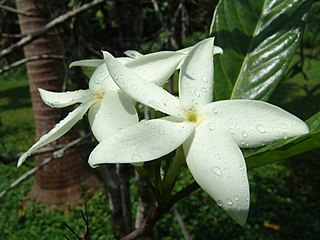
Atractocarpus hirtus, commonly known as the hairy gardenia or native loquat, is a plant in the madder family Rubiaceae, a large family of some 6,500 species with a cosmopolitan distribution. This species is endemic to north-east Queensland, Australia.


















